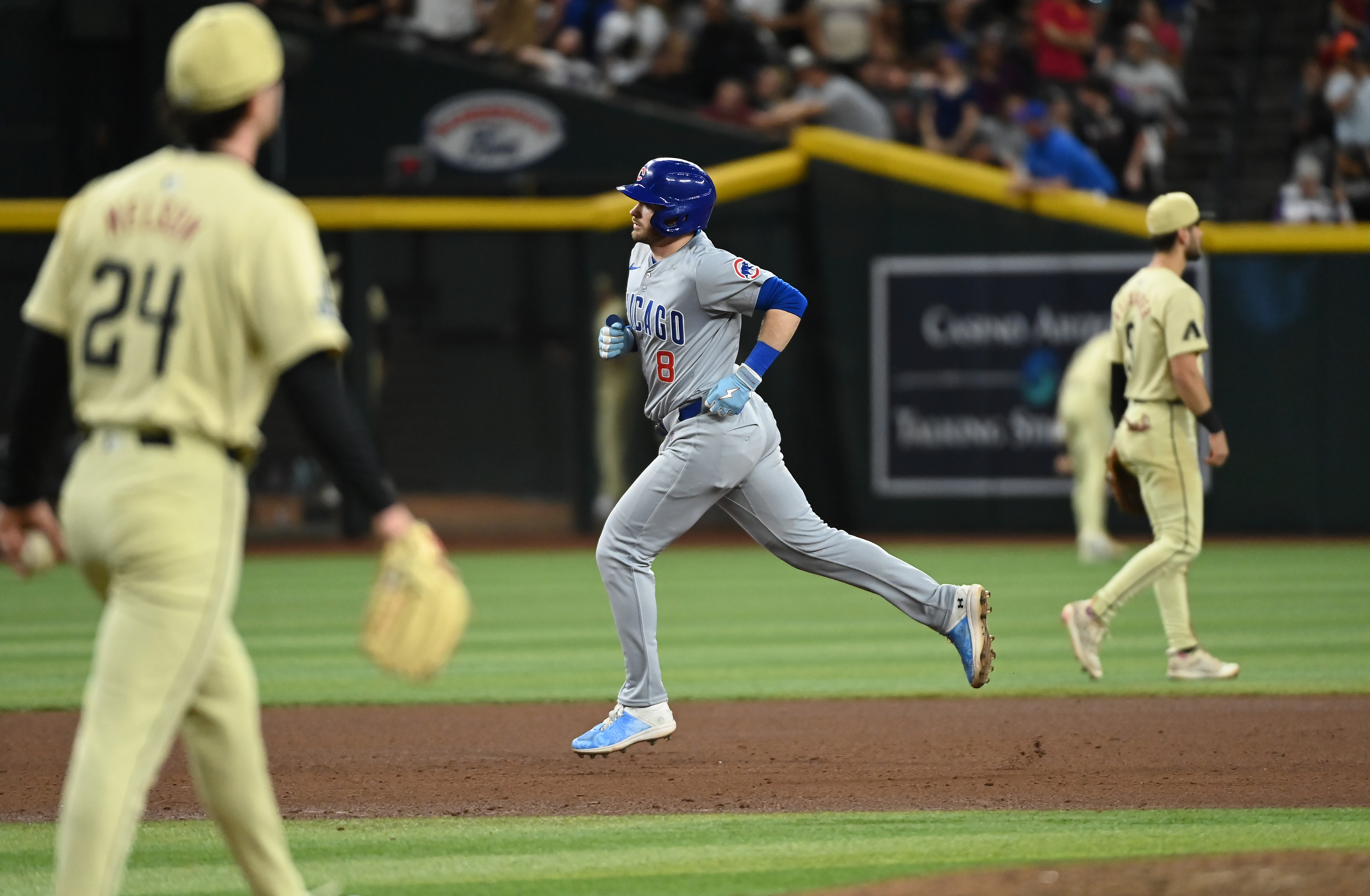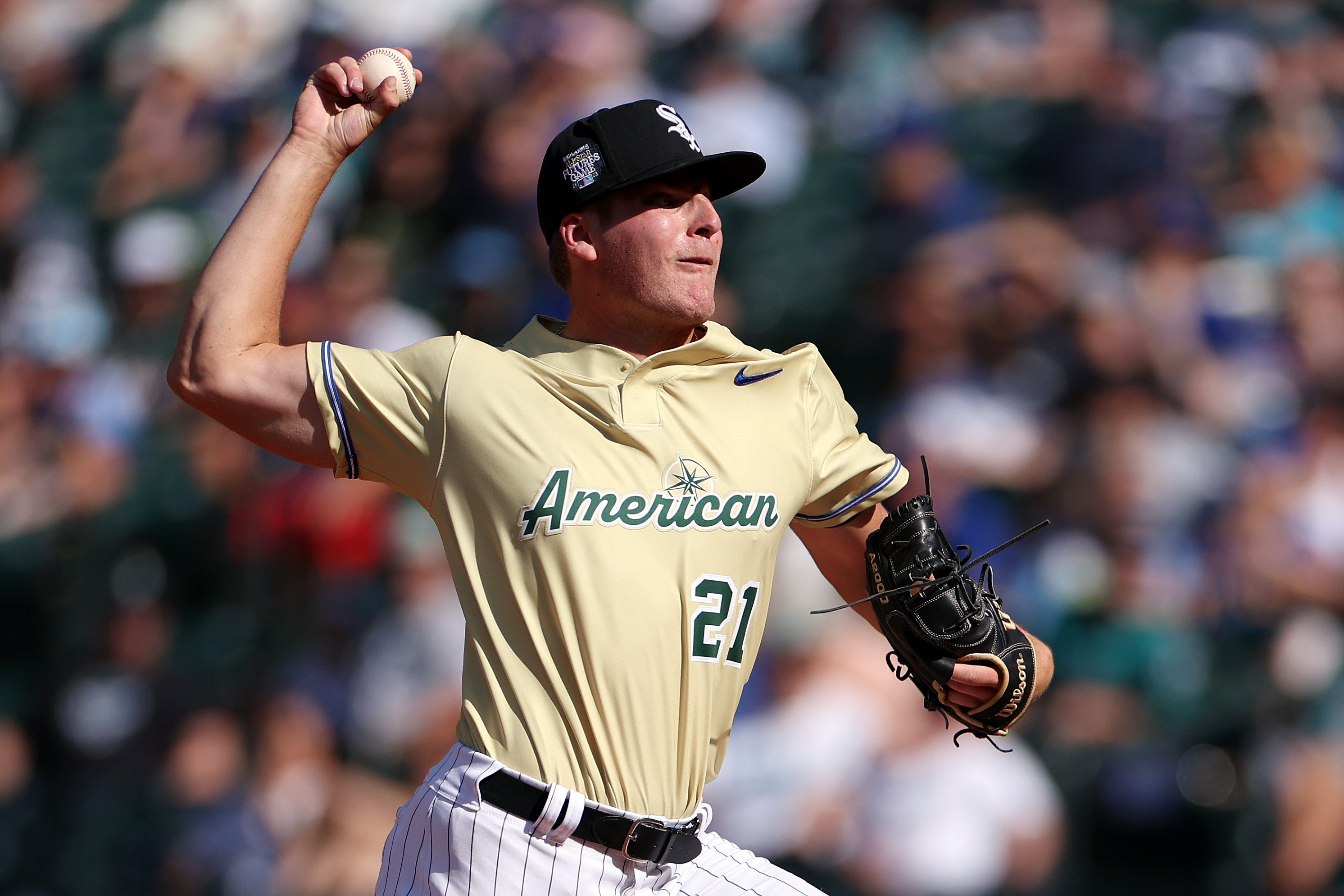
Sunday, Nov. 7, 2010
5:54 PM
By Brett Ballantini
CSNChicago.com
If Chicago White Sox general manager Ken Williams matched his reticence in the media with reserve at the trading table, chances are hed have a lot sunnier reputation among White Sox fans. But then, if Williams was any less aggressive in the offseason, hed likely be out of a jobafter all, favored son or no, there arent many GMs out there who last a decade with a team at any level, in any sport.
Indeed its Williams bold nature that keeps the White Sox competitive. And contrary to those clearly on the side of manager Ozzie Guillen in the Ozzie-Kenny wars (full disclosure: I love both), a big reason why the White Sox are on the short list of talked-about clubs isnt simply the whatd Ozzie say? factor, but because Williams consistently brings in intriguing players who more often than not aid in White Sox victories.
The White Sox have averaged 85 wins per season during Williams decade of servicea number he probably wants to kick the crap out of himself because its not 90. But there can be no doubt why Williams remains in the GM chair on the South Sidehe builds winners.
Back in July, I detailed some of Williams top deals and estimated hed brought in via trade alone some 41.8 Wins Above Replacement (WAR) to the White Sox in his tenure; thats a near All-Star per season.
In 2010, there were a number of stinkers that killed GM Kenny and earned an inordinate amount of attention, and in spite of squeezing 88 wins out of a Jake Peavy-less team, most judge 2010 as a failure for the White Sox. And contrary to Guillens lament at midseason, most fans judge Williams harshly for the DH conundrum that hamstrung the club, not the manager.
MLB
So, how did Williams do as Chicagos general manager in 2010? This analysis draws upon the player season values at FanGraphs (where they basically assign a value to players WAR, with one win above replacement equating to 4 million) to see if the White Sox got their moneys worth from each player on the roster.
Positional totals come from the players FanGraphs value subtracted by season salary, and numbers below are expressed in millions. Only the substantive members of the White Sox (non-italicized) are included in the bolded positional sums. The added value beyond salary is labeled as team profit.
Catcher (4.5 million in team profit)
Ramon Castro 3.7
Tyler Flowers -0.1
Donny Lucy 0.7
A.J. Pierzynski 0.2
The decision to bring Castro back for a season that fell just short of his career best transformed an otherwise unprofitable position. Pierzynski had a solid year (7 million value), but his relatively high salary meant he basically met his salary expectations.
First Base (4.8 million)
Paul Konerko 4.8
In only two of his latest contracts five years did PK outperform his 12 million salary, and the 2010 season was one of them.
Second Base (1.2 million)
Gordon Beckham 3.2
Brent Lillibridge -2.0
Taking into account how little Beckham and Lillibridge are paid tells everything about their modest production in 2010.
Shortstop (14.1 million)
Alexei Ramirez 14.1
Ramirez is hardly well-paid, but it was his over-the-top performance in 2010 that delivered 14.1 million in profit to the White Sox. Its safe to assume there is no better shortstop bargain in baseball.
Third Base (-8.3 million)
Brent Morel 0.2
Jayson Nix -1.8
Mark Teahen -6.3
Dayan Viciedo 0.0
Omar Vizquel -0.4
If you had a gut feeling that third base was the nightmare position for the White Sox, this value analysis proves that out. Even Nix managed to take a bite out of the team before he was waived early in the season. It remains to be seen whether Morel, apparently the incumbent starter for 2011, can add much value to the White Soxat this point it would be a win for the Chisox if 2011s profit at the hot corner mimics that of second base in 2010.
Left Field (6 million)
Juan Pierre 6.0
Combine Pierres incredible production for the White Sox with the fact that the Los Angeles Dodgers are paying the majority of his salary, and youve got an easy win in left field.
Center Field (4.5 million)
Alejandro De Aza -0.6
Alex Rios 5.1
Rios went from one of the worst values in all of baseball in 2009 to well outperforming his contract in 2010.
Right Field (3.7 million)
Andruw Jones 6.9
Carlos Quentin -3.2
Think those of us who feel that Quentins likely 4 million salary for 2011 would be better spent in bringing back Jones for two seasons are nuts? Joness defenseor the lack of it from Qmakes the big difference here. But even discounting D, Jones was a better value in 2010.
Designated Hitter (-7.3 million)
Mark Kotsay -4.3
Manny Ramirez -3.0
No, DH wasnt the very worst spot on the team, as evidenced above. But aggravating the issue was the fact that Jim Thome, who left the White Sox, delivered 13.1 million in profit to the rival Minnesota Twins as Kotsay, Jones, and later Ramirez failed in Gentleman Jims old spot. Kotsay had posted negative WAR seasons in three of the past four years and to have expected an uptick was a foolish gamble. Ramirez apparently did a lot of good behind the closed doors of the White Sox clubhouse, but on the field, he couldnt come close to making up for his 4 million throwaway salary for September.
Starting Pitchers (30.6 million)
Mark Buehrle 1.2
John Danks 14.0
Gavin Floyd 14.6
Freddy Garcia 4.4
Daniel Hudson 0.4
Edwin Jackson 3.8
Jake Peavy -7.8
If Peavy hadnt gotten injured, there wouldnt be a single negative figure in the rotationand Peavys debit was due to injury, pitching just half a season at a 15 million salary. Floyds 14.6 million team profit makes him the best value on the White Sox.
Relief Pitchers (5.9 million)
Lucas Harrell 0.1
Gregory Infante 0.1
Bobby Jenks -1.3
Scott Linebrink -5.4
Jeffrey Marquez -0.6
Tony Pena -0.2
J.J. Putz 3.0
Chris Sale 0.9
Sergio Santos 3.5
Matt Thornton 6.3
Erick Threets 0.8
Carlos Torres -0.3
Randy Williams -1.0
As indicated by the long list here, the bullpen was a bigger mess than the rotation in 2010, but aside from Linebrink, there were no awful values. Its safe to assume Threetss value could have approached that of Putz or Santos had he enjoyed an injury-free season as well.
Williams Grade: B
All in all, Williams got almost 62.8 million in profit from his core players. That takes into account all the negatives (meaning their performance value to the team didnt offset their salary) from Lillibridge, Teahen, Vizquel, Quentin, Kotsay, Manny Ramirez, Peavy, Jenks, Linebrink and Pena.
Even if you dismiss the incumbent roster and judge Williams only by the players he brought onto the White Sox this season, they came at a sum profit, albeit a modest one. You can chop it in many ways, but counting Castro, Morel, Teahen, Vizquel, Pierre, De Aza, Jones, Manny Ramirez, Kotsay, Garcia, Jackson, Putz and Sale as new players (yes, Garcia and Kotsay were on the roster at the end of 2009 but were free agents at the end of the year), Williams brought in players who delivered 14.3 million in value above their 2010 salaries.
For some perspective on where the White Soxs profit lands them among MLB teams, see sidebar.
As well as Williams managed this season, he has better years on his resume. And with the White Sox clearly dominating the Twins only in starting rotation (yes, the key piece), it is incumbent on the GM to earn equal marks to Minnesota this offseason, lest the White Sox spend 2011 playing well but again looking up at the perennial division winners.
Brett Ballantini is CSNChicago.com's White Sox Insider. Follow him @CSNChi_Beatnik on Twitter for up-to-the-minute White Sox information.


